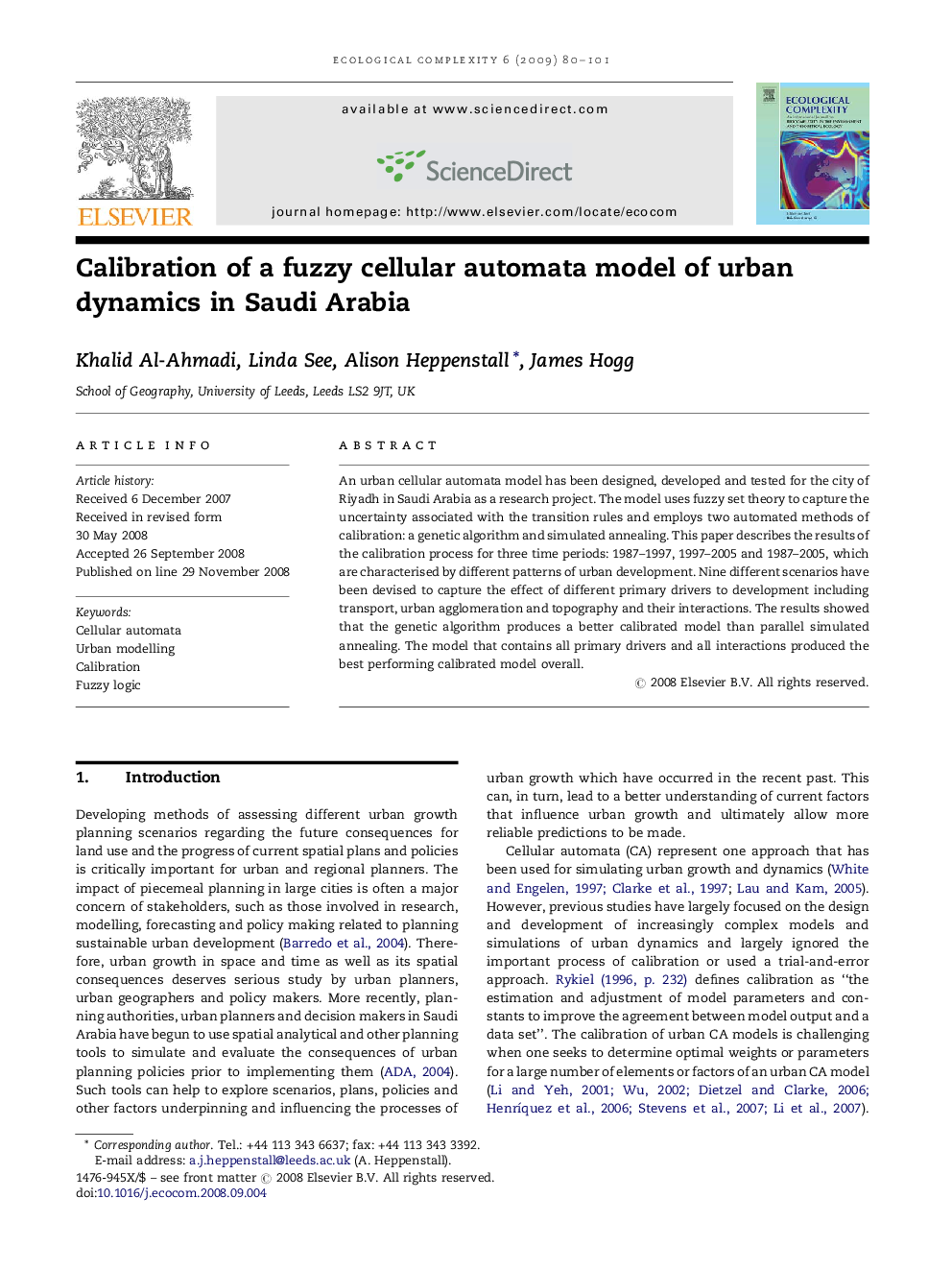| کد مقاله | کد نشریه | سال انتشار | مقاله انگلیسی | نسخه تمام متن |
|---|---|---|---|---|
| 4372718 | 1303075 | 2009 | 22 صفحه PDF | دانلود رایگان |

An urban cellular automata model has been designed, developed and tested for the city of Riyadh in Saudi Arabia as a research project. The model uses fuzzy set theory to capture the uncertainty associated with the transition rules and employs two automated methods of calibration: a genetic algorithm and simulated annealing. This paper describes the results of the calibration process for three time periods: 1987–1997, 1997–2005 and 1987–2005, which are characterised by different patterns of urban development. Nine different scenarios have been devised to capture the effect of different primary drivers to development including transport, urban agglomeration and topography and their interactions. The results showed that the genetic algorithm produces a better calibrated model than parallel simulated annealing. The model that contains all primary drivers and all interactions produced the best performing calibrated model overall.
Journal: Ecological Complexity - Volume 6, Issue 2, June 2009, Pages 80–101